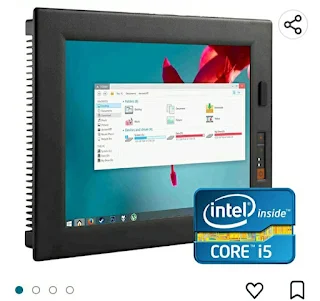Embedded computers definition
Embedded computers, also known as embedded systems, are computer systems integrated into other devices or products to perform specific functions. They are typically small, low-power, and low-cost, and are designed to be highly reliable and efficient in performing their specific tasks.
Embedded computers can be found in a wide range of products, including automobiles, home appliances, medical devices, industrial control systems, and many others. Some examples of embedded systems include:
Automotive systems - Modern automobiles contain a variety of embedded systems, such as engine control systems, navigation systems, and infotainment systems. These systems work together to provide a safe and enjoyable driving experience.
Home appliances - Many home appliances, such as washing machines, refrigerators, and microwave ovens, now contain embedded systems that help to control their functions and improve efficiency.
Medical devices - Medical devices such as pacemakers, insulin pumps, and glucose monitors use embedded computers to control their functions and provide critical information to patients and healthcare professionals.
Industrial control systems - Embedded computers are used in industrial control systems to control and monitor complex industrial processes, such as assembly lines, chemical plants, and power generation systems.
Classification of embedded computers
Embedded systems can be classified into several categories based on their performance, memory, and processing capabilities. Some of these categories include:
Microcontroller-based systems - These are simple embedded systems that contain a microcontroller and limited memory and input/output (I/O) capabilities. They are used in simple control applications and typically have low processing power.
Real-time operating system (RTOS) based systems - These systems use real-time operating systems to provide predictable and deterministic performance, making them suitable for critical control applications.
Linux-based systems - These systems use the Linux operating system, which provides a high level of functionality and flexibility. They are often used in applications where more processing power and memory are required.
Networked systems - These embedded systems are connected to other devices and systems via a network, such as Ethernet or Wi-Fi, allowing for data and control communication.
Embedded computers specifications
The specifications of an embedded computer will vary depending on the specific application and requirements. Some of the key specifications to consider include:
Processor - The processor is the heart of the embedded computer and will have a significant impact on its performance. Choosing a processor with appropriate processing power, memory capacity, and I/O capabilities is crucial for ensuring the embedded computer meets the needs of the application.
Memory - Embedded systems typically have limited memory compared to conventional computers, so choosing the right type and amount of memory is important for ensuring that the system can perform its functions efficiently.
Power consumption - Power consumption is an important consideration for embedded systems, as they are often used in battery-powered devices or applications where power is limited. Low-power processors and power management techniques are typically used to minimize power consumption.
I/O capabilities - The I/O capabilities of an embedded computer determine how it can interact with the outside world. Depending on the application, different types of I/O, such as digital inputs, analog inputs, and communication interfaces, may be required.




